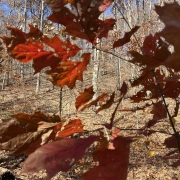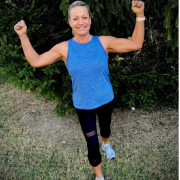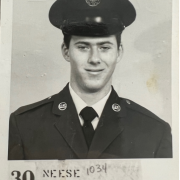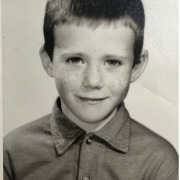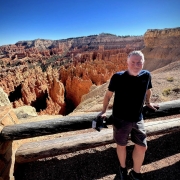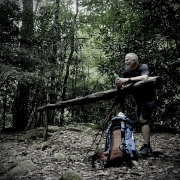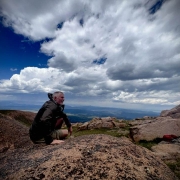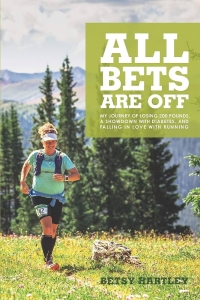Moderation Management for Eating | Healthy Aging Series: S9 E16
It’s the Halloween season as I write this episode, which means Scary Movie Sunday at our house. The movie “The Nun” caught our eyes so we watched it. Yeah, I know, it’s not High Art, not like the Exorcist.
There is a scene near the end, that somewhat illustrates what kind of person you are when it comes to picking the program that helps you break up with food. The priest and the nun are rushing off to battle Valak, the evil nun. The secular helper, Frenchie, who is feeling a little powerless asked, “Don’t you think we should pray?” And the priest answers, “There’s a time to pray, and a time to act. Now is the time to act!”
Frenchie reluctantly joins them, and they defeat the evil presence.
I don’t think everything can be separated into either pray or act, but there are people, and you know who you are, who have a more “God helps those who help themselves,” attitude about personal change.
There are people who see themselves as having the power within themselves to change. They don’t need a higher power. They see their problem with eating as a problem with eating. Not a disease.
And some of those people see moderation, not absence as an option. If you’re that kind of person, there is a program out there that can help you break up with food the way you want to break up. Maybe you want a total break up with food, never another gram of sugar, never another slice of bread, never another bottle of Pepsi, or Coke, for the rest of your life, or maybe you can partake in these things within reason, once or twice a week, or special occasions, or in small doses.
Then you’re the kind of person that will be interested in Moderation Management for Eating (MMFE).
How does MMFE work?
The starting point.
Although you feel powerless over food, the truth is that you have enough power to start. That will grow into power to sustain your control over food. “As you take each step forward, your belief and confidence in your ability to succeed will grow.“ (Writers of Responsible Drinking.) “Some of us will never obtain a “take it or leave it“ attitude toward our drinking or eating, but we will obtain the power to make the decision to “take or leave the next drink, or next bite of food.” (From the book Moderate Drinkers).
Power begets power. What we practice grows stronger, as Mindfulness Gurus proclaim.
MMFE starts with faith in yourself. MMFE focuses on all the things you’ve accomplished and change in your life. To see yourself as powerless is to ignore everything that you have battled and overcome. You have solved your problems. You have found your job. You have finished your education. Growth and change are slow, but as you equip yourself with the right tools, you will change and overcome your problem with food.
Next, 30 days and nights of displaying your superpower abstaining from Trigger Foods.
MMFE members make a list of foods that trigger problem eating. The list most likely includes sugar, processed food, and whatever causes you to lose control. The 30-day period is a time to display your superpowers. You show food who’s boss. You make the decision and stick with it.
You tell yourself that it’s only for 30 days. You’ll be able to eat that food again. Maybe you want to eat them again. But it’s your choice. Moderation or abstinence.
You sprinkle 30-day sessions throughout the year. January. The 30 days leading up to your birthday. Mine is in July so that works well. Some of you might want to do it between Thanksgiving and Christmas. I’ve done that.
And then, make a support system. Currently, there is a website called Abstar for drinkers who want to moderate their drinking.
You can set days during the month to eat Trigger Foods, and then set goals for the amount of Trigger Foods. You eat on each of your goal days. You record each week the days you succeed. No one is checking to see if you are recording drinks or donuts. You are moderating a substance that has a grip on you. Food? Alcohol? If you’re struggling with obesity. It’s just as serious as problem drinking.
Or you can make or create a community of MMFE’s. You can find people on social media platforms that would be willing to do web-based support, like zoom meetings.
So far here’s what we’ve covered.
1. MMFE starts with power from within.
2. There’s a 30-day power session
3. Find or make a community for encouragement and emotional support.
Finally, put in place a Skills Plan that will help you succeed in breaking up with food.
“Responsible Drinking: Motivation Management Approach for Problem Drinkers,” written by Rotgers, Kern, and Hoeltzer.
There are books out there that will walk you through all the details about moderation management. Of course, these books have to do with managing or moderating your drinking, but simply replace the drinking with food.
I encourage you to read this book. It’s a gold mine of skills for controlling your eating. Just remember to replace drink with eat.
Chapter 6: General, Drinking, Eating, Control skills.
I’m going to list them and do the “find and replace” function for you.
1. Understand what is “enough.”
For me, sugar and no-bake cookies are my problem food. I have learned that one bite can often satiate me with my sugar fix. I buy a cookie. I take a bite. I put it back in the bakery bag and smash it up. Enough.
2. Think ahead. Put sugar into your schedule, when you will plan on eating it in the week to come.
3. Measure and count. I’m not a big fan of counting calories, but it works for many people. Just remember the Obesity Memoirs that I wrote about. Most of writers used the “move more/eat less” approach. It helps to count calories.
4. Self-talk. Have a script. Have slogans. Love yourself.
5. Focus on fun. Stay active doing the things you enjoy. Learn to enjoy moderating your food. Make it a game.
6. Think about tomorrow. Someone one said that nothing tastes as good as healthy (she said skinny) feels. Think about how you would feel when you stick with your plan.
Chapter 7: Pinpointing your drinking or eating triggers
This chapter looks at the antecedent strategies for overcoming Trigger foods. The people, places, times, activities, work-related and money-related circumstances, as well as feelings, and major life events that trigger eating Trigger Foods.
And finally, Chapter 8. How to manage your triggers for overcoming problem foods.
I offer an example of urge surfing in a later episode. It helps you know how to manage anxiety, which is often the trigger for consuming Trigger Foods.
I’m Just scratching the surface of MMFE.
If you want to learn more about MMFE you’ll need to Google moderate drinking on Amazon, and it will provide several books on this topic.
MMFE is an approach that has many similarities with Overeaters Anonymous but there are two differences that set them apart: powerlessness and abstinence only.
What kind of person are you?
Do you see miracles or coincidences? Are you a prayer or a doer? I know I’m oversimplifying this, but I think you get what I’m saying. Overeaters Anonymous and MMFE are two choices with lots of overlapping principles. Both can help you break up with food.
Regardless of whether you find the power within, or you find the power outside yourself, you have the power to break up and stay broke up with food for the rest of your life.
It’s time to choose.
To read more entries in the Healthy Aging series, click here.


